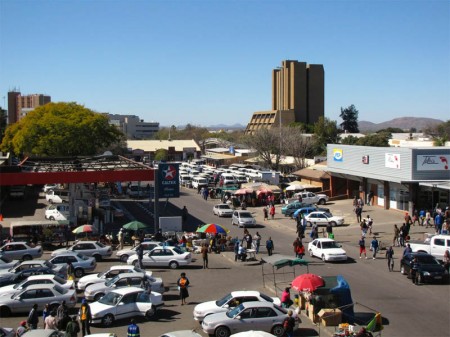The different faces of Gaborone
Sandy Grant | Wednesday September 28, 2016 16:00


In the old days, most of us were Main Mall people.
But when Game was opened, there was a pronounced shift to River Walk.
Then Game moved to Kgale and we all rushed there. But when the Sebele, Airport Junction and North Gate Malls were opened, the divide between people living in the south and those living to the north was complete.
But there are also other ways of looking at Gaborone. Try its system of communications – road, rail and air. The latter two are clearly defined by the railway station and the airport.
The road, less so than in the past can best be defined today by the two junctions, in the old Village, at River Walk and at the Fitness Centre/Filling Station, both leading to Tlokweng and to the border and on to the Rand. If each of the three, with an area of, say, a square kilometer is considered in terms of land use, popular use and the investment of public resources, the differences between them will emerge as obvious and startling.
The airport area is one of very heavy government investment. It has space, and yet is used by a relatively small number of more affluent people.
It is commerce free. The River Walk junction area is one which has enjoyed minimal government investment (the plantation).
It too has space, - benefitting, in part, from its colonial settlement past – but boasts a major shopping mall which is popularly used by those with cars.
The last of the three, the railway station area, is something of a curiosity because the railway is no longer the pivot and draw of the past.
Nevertheless, unlike the other two, this area is heavily congested by traffic and is intensely used by people, is heavily commercialised but has enjoyed little government investment.
The railway station area, together with the two junctions in the Village, represents Gaborone’s historical, pre-20th century core.
The one area retains something of the feel of the old railway age, certainly in terms of mass usage, whilst with the other, still widely spaced, the oxwaggon seems to have disappeared only yesterday.
Although the two areas share a common historical origin, they have absolutely nothing else which might convince an outsider that they represent major elements of the same city.
Thus, few of those who are familiar with the railway station area are likely to know of the the two road junctions and the Village whilst those who are comfortable in those places are unlikely to have visited the station area and to have used the pedestrian bridge which gives access to the Rail Park Mall.
And more is the pity because this is perhaps the most interesting part of the city.
It also happens to provide a view of Gaborone which can be enjoyed nowhere else.
It is from here that the majesty and significance of Orapa House to Gaborone can be best enjoyed.
